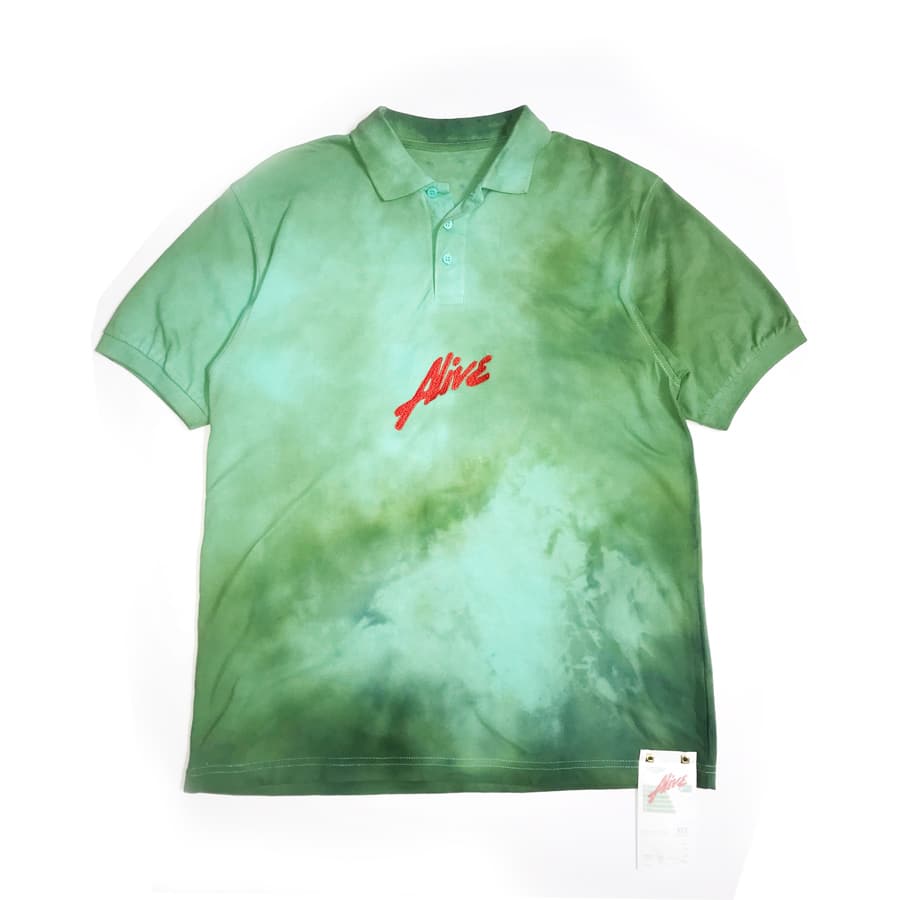Alive & More is the fashion brand that lets you unlock real clothes through a video game
Rare are the times when gaming and fashion converge. I remember that one time Louis Vuitton and Final Fantasy came together, or the time Hermès released a rudimentary video game. But most couture collaborations with the gaming industry remain within the realm of artifice over substance. Karl Jouanni is here to change that with his forward-thinking, and gravity-defying fashion brand, Alive & More. Living within the cosmos of his other venture, Team Relms, Alive & More is a streetwear label that brings something new, fresh, and all-encompassing to the table. The concept is simple, get the RELMS app, play the game, and travel to the virtual fashion shrine to unlock your very real garments, and, while you’re at it, immerse yourself in the world of Team Relms as well.
The game designed by Team Relms marks a departure from traditional ways of selling products, but also showcases the rapidly evolving means of e-shopping. Now that online buying has become so commonplace, are digital means of sale becoming antiquated? In Jouanni’s words, his choice to go VR comes from a desire to “bring the in-store experience closer to the ‘point and click’ online shopping experience, in addition to clear benefits, such as a low carbon footprint.”
Less expected, however, is Team Relms’ desire to inspire real-world brands to layer their own buying experience rather than feel pressured to move everything online. This rings true for brands such as Gentle Monster who have thrived on heightening their real-world experience rather than betting everything on e-commerce, thus further demonstrating that the shopping experience can not only become an attraction, but can also host events and become its own branded-micro-universe and lifestyle.

Team Relms’ business model comes at a time of doubt concerning the pros and cons of incorporating paid goods or features in video games. In the UK, as of this year, the laws surrounding paid add-ons in games such as Counter-Strike and Call of Duty, have come under fire for potentially being a gateway to gambling later on in life. Some video games were also recently proved to be the perfect platform for criminals to launder dirty money. However, Jouanni stresses that his method of incorporating paid services is more to mimic that of subscriptions fees and exclusivity in real life. According to Jouanni, the natural evolution for his app would be to include infinite RELMS with a few being a paid extra, to give more perceived value to each VR universe created.
In terms of the future of VR, Jouanni has high hopes. He sees our convergence with technology and imminent symbiosis via Neuralink to be impending, and that, as he shared with Screen Shot, “We will all inevitably reach the point when brands and individuals alike have to make the call of how they will be represented in that conversation.”
Similar to how the internet has impacted us and the way we connect, Jouanni goes on to iterate that brands slowly created their web presence one by one before it became absolutely necessary to hire a web developer and launch their website. “This is where VR is heading, the new webpage,” he explains.
So maybe it is time for us to not only question how we approach traditional means of shopping, but also foresee where digital commerce can go. Is the next step a harmonious merge of the two? Or is it time we catch up with Jouanni and Team Relms while we still can, and begin building our very own digital abyss? Until then, my advice for you is to take cues from the man himself, venture into his digital world, and head over to the Team Relms website or the RELMS app. Enjoy your new shopping experience.





